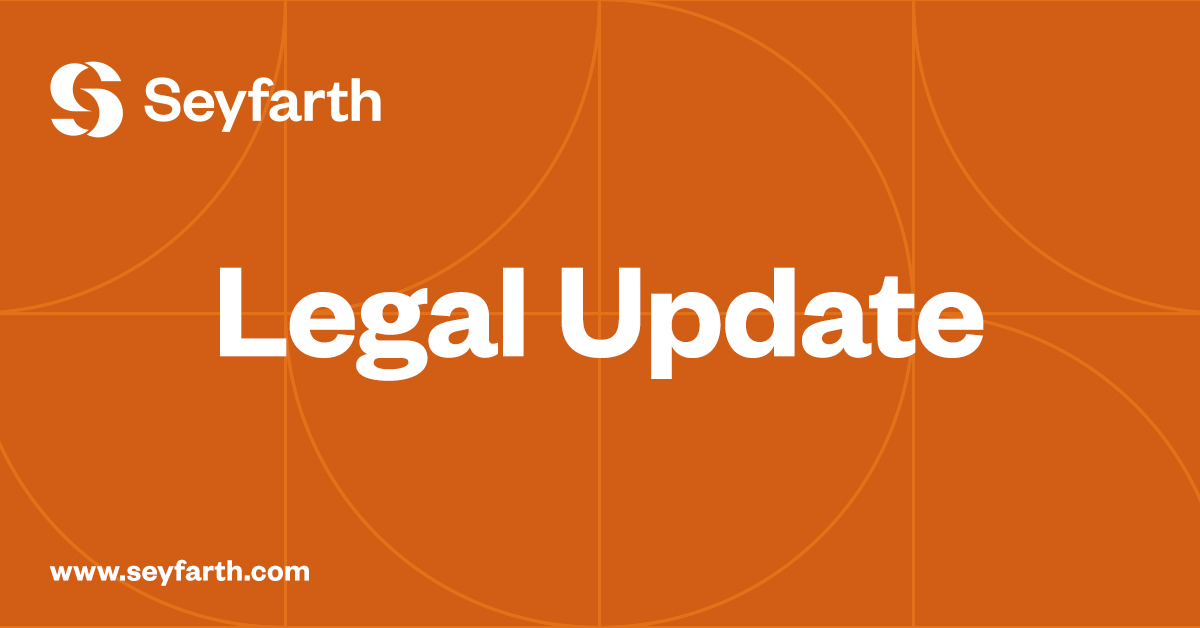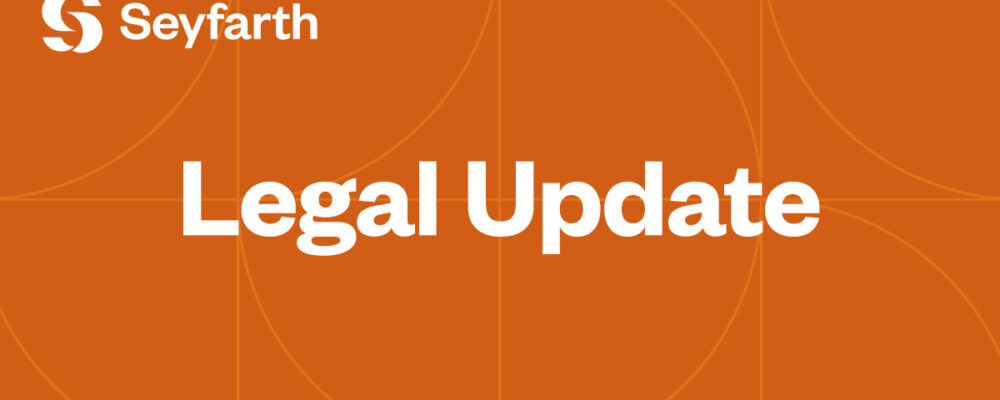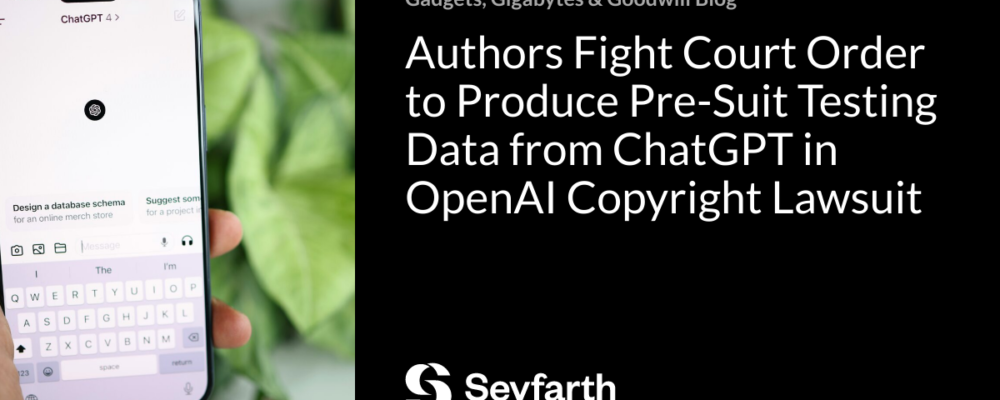What You Need to Know:
- On May 6, 2024, the Connecticut legislature passed a bill (HB No. 5005) amending a number of key aspects of the Connecticut statewide Paid Sick Leave Law. The bill was signed into law by Governor Ned Lamont on May 21, 2024.
- Some of the notable substantive amendments to Connecticut Paid Sick Leave include (a) expansions of which employers are subject to the law, which individuals are eligible for paid sick leave, and the scope of covered reasons for use and family members, (b) a faster paid sick leave accrual rate, (c) a more pro-employee usage waiting period standard for new hires, (d) removal of provisions on documentation and employee notice to their employer, and (e) the addition of several new provisions on a variety of topics, such as frontloading, balance notification, employee transfers, and successor employers.
-
The amendments will become effective January 1, 2025, other than the changes to employer coverage, which are being implemented in three phases between January 1, 2025 and January 1, 2027.
Connecticut Paid Sick Leave – Background.
On January 1, 2012, Connecticut became a trailblazer in the paid sick leave law space when it became home to the country’s first statewide paid sick leave mandate. In fact, the first time Connecticut amended its paid sick leave law, which occurred on January 1, 2015, there still were no other states with a paid sick leave mandate. That changed a few months later in July 2015 when both California and Massachusetts saw their respective statewide mandates go into effect.
Today, Connecticut is one of 19 states, plus Washington, D.C., with either a statewide paid sick leave or paid time off law on the books.[1] Since mid-2015, the overwhelming majority of statewide (and local) paid sick leave mandates that have gone into effect have provided more favorable benefits to eligible employees as compared to the Connecticut mandate. Some areas where other paid sick leave mandates leapfrogged Connecticut include (a) scope of eligible employees, (b) scope of covered employers, (c) rate of paid sick leave accrual, (d) covered reasons for use, and (e) definition of family member. As outlined below, the recent May 2024 amendments to the Connecticut paid sick leave law added a number of pro-employee components to the mandate, including on each of these topics (and more!), bringing it closer to its counterparts in other states around the country.
Connecticut Paid Sick Leave – May 2024 Amendments.
Here are highlights from the recent amendments to the Connecticut Paid Sick Leave Law:
- Employer Coverage:
- Current Standard: An employer is subject to the Connecticut Paid Sick Leave law if they employ 50 or more individuals in the state.
- Amended Standard: The forthcoming Connecticut paid sick leave amendments will expand the scope of employer coverage in phases between January 1, 2025 and January 1, 2027 as follows: (a) As of January 1, 2025, an employer is subject to the mandate if they employ 25 or more individuals in the state; (b) As of January 1, 2026, the coverage threshold drops to employing 11 or more individuals in the state; and (c) As of January 1, 2027, the coverage threshold drops to employing one or more individuals in the state. The headcount size will be assessed based on the employer’s payroll for the week containing January first, annually.
- Employee Eligibility:
- Current Standard: The Connecticut Paid Sick Leave law currently requires that covered employers provide paid sick leave benefits to individuals who meet the law’s definition of “service worker” and who are either paid on an hourly basis or non-exempt under the Fair Labor Standards Act (FLSA). The statute includes a list of specific job categories that are considered a “service worker.”
- Amended Standard: Starting January 1, 2025, the statute will apply to all individuals who meet the amended law’s broad definition of “employee” – an individual engaged in service to an employer in the business of the employer. Eligibility no longer will require that the individual be a “service worker,” nor that they are paid on an hourly basis or non-exempt under the FLSA. Exclusions from the forthcoming definition of employee include:
- Certain individuals who are members of a construction-related tradesperson employee organization that meet certain criteria involving multiemployer health plans; and
- A seasonal employee, which is defined as someone who works 120 days or less in any year.
- Covered Reasons for Use:
- Current Standard: The Connecticut paid sick leave law currently allows eligible employees to use available paid sick leave for the following reasons:
- illness, injury or health condition of a covered employee or covered employee’s child or spouse;
- the medical diagnosis, care or treatment for mental or physical illness, injury or health condition of a covered employee or a covered employee’s child or spouse;
- preventative medical care of a covered employee or a covered employee’s child or spouse;
- a mental health wellness day for a covered employee; and
- where a covered employee is a victim of family violence of sexual assault or where a covered employee is a parent or guardian of a child who is a victim of family violence as long as the covered employee is not a perpetrator or alleged perpetrator, leave may be taken for (a) medical care or psychological or other counseling for physical or psychological injury or disability, (b) obtaining services from a victim services organization, (c) relocating due to such family violence or sexual assault, or (d) participating in any civil or criminal proceedings related to or resulting from such family violence or sexual assault.
- Current Standard: The Connecticut paid sick leave law currently allows eligible employees to use available paid sick leave for the following reasons:
On October 1, 2023, the law expanded the reasons for use to cover a “mental health wellness day” and to allow parents or guardians to use sick time for a child who is a victim of family violence of sexual assault.
- Amended Standard: The amended law adds two new reasons for use to the above list. These include use of available paid sick leave for:
- closure by public official’s order, due to a public health emergency, of either (a) an employer’s place of business, or (b) a family member’s school or place of care; and
- a determination by a health authority with jurisdiction over an employer of the employee, an employer of a family member or a health care provider, that such employee or family member poses a risk to the health of others due to their exposure to a communicable illness, whether or not the employee or family member contracted the communicable illness.
- In addition, the law’s expanded definition of covered family member will apply to the law’s current covered reasons for use, as applicable.
- Family Members:
- Current Standard: The Connecticut paid sick leave law currently only allows eligible employees to use their available paid sick leave to care for their child or spouse, with the latter being defined as “husband or wife.”
- Amended Standard: The amended law adds a new definition of “family member,” which covers the following as of January 1, 2025: a spouse, sibling, child, grandparent, grandchild or parent of an employee, or an individual related to the employee by blood or affinity whose close association with the employee shows to be equivalent to those family relationships. The definition of “spouse” has been expanded to include registered domestic partners, in addition to legal marriage. The definition of “child” has also been expanded and will include an individual to whom the employee stood in loco parentis when the individual was a child.
- Employee Notice to Employers and Documentation:
- Current Standard:
- The Connecticut paid sick leave law currently allows employers to require a maximum of 7 days’ notice from the covered employee for foreseeable absences under the law. Covered employees may provide notice for unforeseeable absences as soon as practicable.
- Further, under the current law, if a covered employee uses paid sick leave for three or more consecutive days, an employer may require reasonable documentation to establish that such leave is being taken for a covered reason under the law.
- Amended Standard: The Connecticut paid sick leave amendments remove the requirements regarding notice to the employer and documentation. The amendments specifically state that employers can no longer require documentation to establish that leave is being taken for a covered purpose.
- Current Standard:
- New Hire Usage Waiting Period:
- Current Standard: Presently, an individual is entitled to Connecticut paid sick leave if they meet the eligibility criteria described above (i.e., “service worker” and is hourly or non-exempt). However, the state also imposes a new hire usage waiting period and a weekly hours worked threshold that an individual must satisfy to be entitled to use paid sick leave. Specifically, the individual must complete 680 hours of employment from their date of hire. In addition, the individual must work an average of 10 or more hours per week in the most recent calendar quarter in order to be able to use paid sick leave.
- Amended Standard: By comparison, the impending amendments to Connecticut paid sick leave remove the 680-hours of employment and 10 or more hours worked per week standards, and replace them with a single usage waiting period – an employee can use available paid sick leave beginning on their 120thcalendar day of employment.
- Accrual:
- Accrual Rate: Currently, covered employers who follow an accrual setup for paid sick leave must provide sick leave to eligible individuals at a rate of at least one hour of paid sick leave for every 40 hours worked. Due to the amendments, this accrual rate will change to one hour of paid sick leave for every 30 hours worked.
- Exempt Employees: As noted above, employees who are exempt under the FLSA are not currently eligible for Connecticut paid sick leave. Beginning January 1, 2025, that will change. As part of this expansion, the amended Connecticut Paid Sick Leave law notes that exempt employees under the FLSA will be presumed to work 40 hours per week for purposes of paid sick leave accrual. An exception exists if an exempt employee’s normal workweek is less than 40 hours, in which case sick leave will accrue based on that normal workweek.
- Frontloading:
- Current Standard: Currently, the law is silent regarding whether providing an upfront grant of Connecticut paid sick leave at the beginning of each year eliminates the requirement to carry over up to 40 hours of Connecticut paid sick leave to the following year.
- Amended Standard: The Connecticut paid sick leave amendments allow employers to provide an employee with an amount of paid sick leave that meets or exceeds the requirements under the law (e.g., frontload) in lieu of carrying over earned, unused paid sick leave from the current year to the following year, if such leave is available for the employee’s immediate use at the beginning of the following year.
- Use of Other Paid Time Off for Paid Sick Leave Compliance:
- Current Standard: Employers can use a non-sick paid time off policy (i.e., PTO, vacation, personal time, etc.) for compliance with the Connecticut Paid Sick Leave law and do not need to provide their eligible workers with additional sick leave if (a) the other paid time off offered by the employer permits use for the same purposes as Connecticut paid sick leave, and (b) the amount of other paid time off accrues as fast as and is equal to or more generous than the law’s requirements.
- Amended Standard: The amendments maintain the above standards, but also go a step further by requiring that the other paid time off offered by the employer also can be used under the same conditions as set forth in Section 31-57t of the Connecticut Paid Sick Leave law (which is limited to provisions on covered reasons for use, documentation for paid sick leave, treatment of unused paid sick leave at termination, and disciplining employees who use available paid sick leave for non-covered reasons).
- Notice and Posting:
- Current Standard: Employers must post notice of the law by displaying a poster in a conspicuous place, accessible to covered employees, at the employer’s place of business in both English and Spanish.
- Amended Standard: The amendments add a requirement to provide written notice (in addition to the poster) to each employee no later than January 1, 2025, or at the time of hire, whichever is later. Employers without a physical workspace or with teleworkers may comply with the notice requirement by sending the poster and written notice to employees via electronic communication or by having a “conspicuous posting” on a web-based or application-based platform.
- Recordkeeping / Balance Notification: The Connecticut paid sick leave amendments appear to require that employers provide employees with certain paid sick leave information on employee paystubs as follows: (a) the number of hours of paid sick leave accrued or provided to the employee, and (b) the number of hours used, if any, during the calendar year. Employers must retain these records for three years. The Connecticut Department of Labor may assess civil penalties of not more than $100 for each violation of this provision.
- Replacement Employees: As is common under many other state and local paid sick leave mandates, the Connecticut paid sick leave amendments include a provision stating that employees who will or are using paid sick leave cannot be required to search for or find a replacement. The current Connecticut law is silent on this topic.
- Employee Transfers: The forthcoming Connecticut paid sick leave amendments include a new provision on employee transfers, stating that if an employee is transferred to another division, entity or worksite but remains with the same employer, the employee must retain and can use all paid sick leave earned at the prior division, entity or worksite.
- Successor Employers: Similarly, the Connecticut paid sick leave amendments state that where an employer succeeds or takes the place of an existing employer, all employees from the predecessor employer who remain employed with the successor must be allowed to retain and use all paid sick leave previously earned while with the predecessor. The current Connecticut law is silent on this topic.
- Regulations Pending: The amended law permits the Labor Commissioner to adopt and implement regulations.
What Should Employers Do Next?
With the Connecticut Paid Sick Leave law amendments going into effect on January 1, 2025, here are some next steps for employers to consider:
- Review existing sick leave or PTO policies and practices, and either implement new policies and practices or revise existing policies and practices to ensure compliance with the amendments, while doing the same for any related attendance, conduct, anti-retaliation, and discipline policies and practices.
- Train supervisory and managerial employees, as well as HR, on the new requirements.
- Monitor the Connecticut Department of Labor’s paid sick leave website for the release of additional administrative guidance on employers’ paid sick leave compliance obligations in light of the amendments.
With the paid leave landscape continuing to expand and grow in complexity, companies should reach out to their Seyfarth attorney for solutions and recommendations on addressing compliance with nationwide paid leave requirements. To stay up-to-date on paid leave developments in Connecticut and beyond, click here to sign up for Seyfarth’s Paid Sick Leave mailing list. Companies interested in Seyfarth’s paid sick leave laws survey should reach out to paidleave@seyfarth.com.
[1] Today, the states that have enacted a statewide general non-COVID-19 paid sick leave or paid time off mandate include: (1) Arizona; (2) California; (3) Colorado; (4) Connecticut; (5) Illinois (PTO law) (effective 1/1/2024); (6) Maine (PTO law); (7) Maryland; (8) Massachusetts; (9) Michigan; (10) Minnesota (effective 1/1/2024); (11) Nevada (PTO law); (12) New Jersey; (13) New Mexico; (14) New York; (15) Oregon; (16) Rhode Island; (17) Vermont; and (18) Washington. In addition, (19) Virginia has a statewide paid sick leave law that applies only to certain home health workers. There also is a non-COVID-19 paid sick leave mandate in (20) Washington, D.C.. Further, including New York City there are more than two dozen municipalities with non-COVID-19 paid sick leave or paid time off mandates in the United States.
“With approximately 900 lawyers across 17 offices, Seyfarth Shaw LLP provides advisory, litigation, and transactional legal services to clients worldwide.”
Please visit the firm link to site






